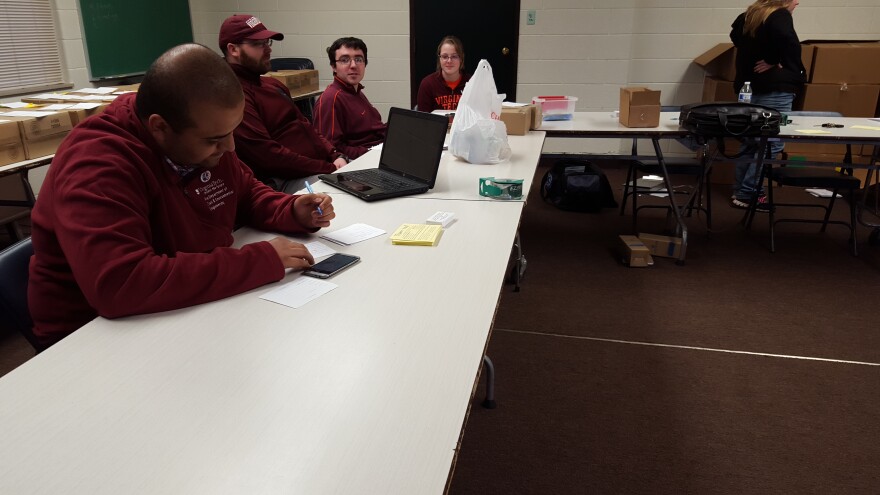Researchers at Virginia Tech will spend the next week comparing current lead levels to the same homes they tested back in August. Those were the first tests that demonstrated a serious lead problem.
Graduate students like Anurag Mantha have been in Flint all week, tracking down people who were in the sample pool last summer, and asking if they can test again.
They’ve knocked on doors, and found some people have moved, while others are frustrated.
“There have been mixed emotions,” Mantha says. “Some people have been tired of this water issue and they’re like, ‘I don’t want to do anything with this water business anymore.'”
Still, Mantha says most people are willing to work with the Virginia Tech team because they were the first ones to take residents’ concerns seriously, and give them their own results when government officials were not.

In August they got great returns, with more than 270 residents out of 300 returning samples. This time, the team wants at least 100 of those same homes to repeat the test. (Update: As of Sunday morning, 170 kits have been returned.)
Lee-Anne Walters, a Flint resident who helped with the testing back in August, is helping again this time around.
“The fact that we started this on Monday and by Thursday we had 60 kits returned; I got two phone calls this morning starting at 6:30 this morning: ‘Hey, my kit's ready, can you come pick it up right now?’ So I am very hopeful that we’ll hit the 100 mark by tomorrow,” Walters said.
The team is hosting an open house for residents to drop off their samples and ask questions from 10 a.m. to 5 p.m. on Saturday at New Standard School in Flint. Officials from the U.S. EPA will also attend.
In addition to lead, they’re also testing for Legionella and other dangerous bacteria that can cause health problems. The team expects results back in a week.
This test should determine if the water system is recovering with properly treated water that’s been flowing from Detroit since last October. But it's not the official test that will determine if Flint’s water technically meets federal drinking water standards. (My colleague Mark Brush made an effort to sort all these tests out for The Environment Report this week.)
To do that, officials are digging up pipes and going into people’s homes to find lead service lines. For that test to be accurate, at least half of the homes tested must have confirmed lead service lines.
Virginia Tech’s Marc Edwards says government officials are finding Flint’s records are "horrifically inaccurate."
He says teams have found no lead line in some places where records indicated there should be lead, and others where they’ve found lead where records claim there shouldn’t be. He says it’s taken officials two weeks to confirm one lead service line that’s suitable for the compliance sample pool – much longer than they expected.
“It’s a tough problem. I mean, it’s a nightmare,” Edwards said. “I made it very clear from the start that finding these lead pipes and replacing them was going to be a logistical challenge, and it’s even worse than I imagined.
Edwards expects it will take another six to eight weeks before results of that testing will start to come in.










